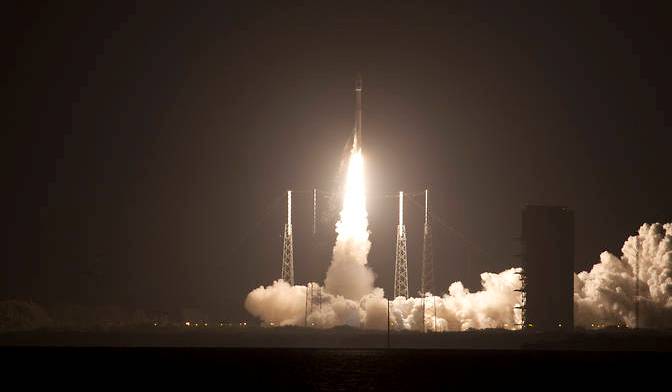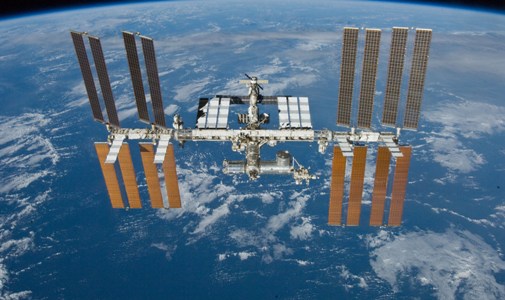
The ULA Atlas V rocket with NASA's Magnetospheric Multiscale (MMS) spacecraft onboard launches from the Cape Canaveral Air Force Station Space Launch Complex 41, Thursday, March 12, 2015, Florida. Photo: NASA
CAPE CANAVERAL, US (AP): NASA has launched four identical spacecraft on a billion-dollar mission to study the explosive give-and-take of the Earth and sun's magnetic fields.
The unmanned Atlas rocket, and NASA's Magnetospheric Multiscale spacecraft, soared into a clear late-night sky, right on time. Within two hours, all four observatories were flying free.
"Just picture-perfect," launch manager Omar Baez said early Friday. "Everybody's cheering. ... Can't ask for any more."
The quartet of observatories is being placed into an oblong orbit stretching tens of thousands of miles into the magnetosphere, nearly halfway to the moon at one point.
They will fly in pyramid formation, between 6 miles (10 kilometres) and 250 miles (402 kilometres) apart, to provide 3-D views of magnetic reconnection on the smallest of scales.
Magnetic reconnection is what happens when magnetic fields like those around Earth and the sun come together, break apart, then come together again, releasing vast energy.
This repeated process drives the aurora, as well as solar storms that can disrupt communications and power on Earth.
Data from this two-year mission should help scientists better understand so-called space weather.
Each observatory resembles a giant octagonal wheel, stretching more than 11 feet (3.35 meters) across and 4 feet (1.22 meters) high, and weighing 3,000 pounds (1,360.79 kilogrammes) apiece.
Numbered and stacked like tires on top of the rocket for launch, No 4 popped free first more than an hour after liftoff, followed every five minutes by another.
"They're all healthy and turned on. Essentially, we're all green and headed into our mission," said NASA project manager Craig Tooley.
Once the long, sensor-laden booms are extended in a few days, each spacecraft could span a baseball field.
Principal investigator Jim Burch from the Southwest Research Institute in San Antonio said measurements will be made down to the electron scale, significantly smaller than previous heliophysics missions.
In all, there are 100 science sensors. Primary science- gathering will begin this summer, following a five-month checkout.
The findings from the USD 1.1 billion mission will be useful in understanding magnetic reconnection throughout the universe. Closer to home, space weather scientists along with everyone on Earth hopefully will benefit.
"We're not setting out here to solve space weather," Burch said. "We're setting out to learn the fundamental features of magnetic reconnection because that's what drives space weather."
 Previous Article
Previous Article Next Article
Next Article













The Indian Air Force, in its flight trials evaluation report submitted before the Defence Ministry l..
view articleAn insight into the Medium Multi-Role Combat Aircraft competition...
view articleSky enthusiasts can now spot the International Space Station (ISS) commanded by Indian-American astr..
view article